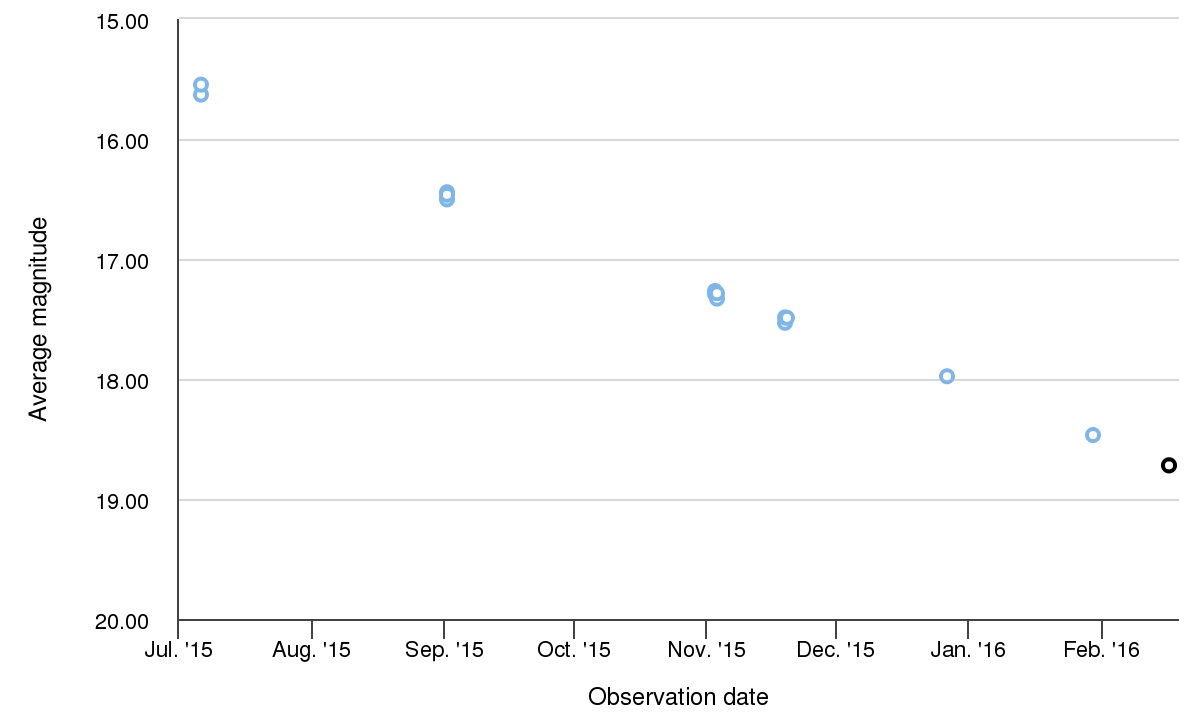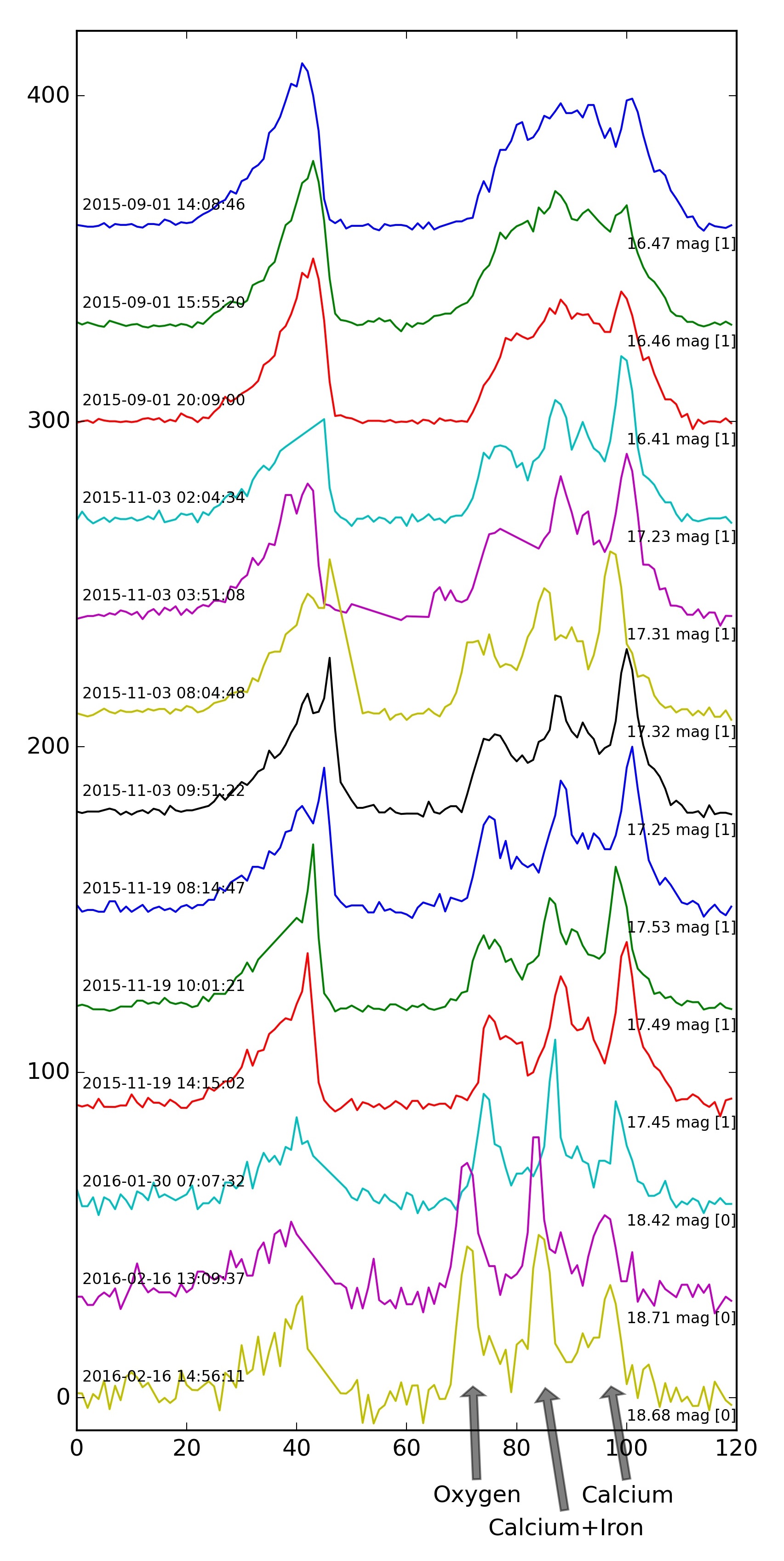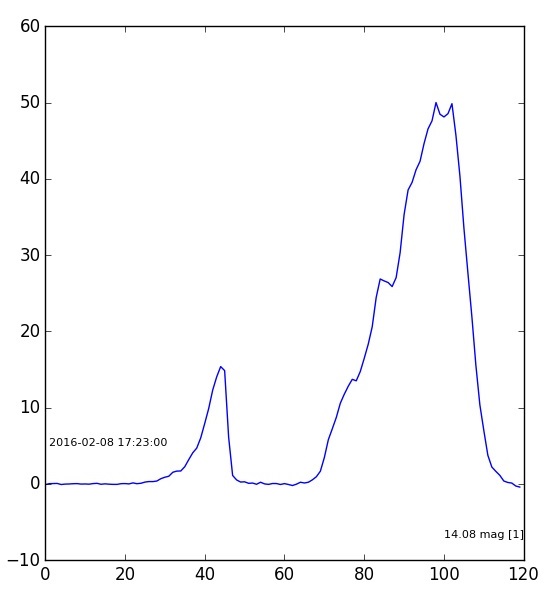IoW_20160229 - Gaia
Image of the Week |
|||||
Gaia sees exploding stars next door |
|||||
 |
|||||
|
Fig. 1: The lightcurve of Gaia16aeg shows a steady decline consistent with a radioactively powered supernova lightcurve. |
|||||
|
Alongside its main mission to chart the sky at unprecedented resolution, Gaia is moonlighting as a survey for transients under the Gaia Photometric Science Alerts project. After reporting the discovery of hundreds of transients, Gaia Alerts had a six-month pause in the second half of 2015. This break allowed for upgrades to the detection algorithms used to find transients. In early 2016, the improved Gaia Alerts pipeline was turned on again. To date we have published in excess of 140 transients at a rate of a little over 3 per day. Many of these transients are supernovae. All Gaia transients are being published on the Photometric Science Alerts web page. |
|||||
 |
|||||
|
Fig. 2: This sequence of spectra charts the evolution of Gaia16aeg as it transitions towards a nebular spectrum. Over a five month period, the continuum fades while strong emission lines of Calcium (including the Ca NIR triplet), Oxygen and Iron are seen to emerge in the red spectrum. The spectra were measured with Gaia's own Blue and Red Prism Photometers (BP/RP). These spectra are uncalibrated, with the Y-axis showing normalised counts, and the X-axis showing channel number (i.e. no attempt is made to measure wavelength). The gap between channels 50-70 is the gap between the BP and RP photometers as imaged on the detectors. |
|||||
|
The second interesting find in the Gaia data was the detection of one of the closest supernovae of the last ten years (Figure 3). SN 2016adj was first discovered by a group of Australian amateur astronomers, and lies in Centaurus A, which at only 3.5 Mpc is extremely nearby. Spectroscopy shows that SN 2016adj is a hydrogen-rich Type II supernova, and likely comes from the collapse of a massive red supergiant star. Cen A is dominated by striking dust lanes, and unfortunately the supernova lies within one of these. The supernova is hence heavily obscured; while it has a faint blue magnitude of ~17, it is much brighter (i~13) in the redder bands. Despite the reddening, the proximity of SN 2016adj means that it is feasible to search the many archival Hubble Space Telescope images of the galaxy to try and identify the supernova progenitor. The astrometric precision of Gaia can be used to accurately locate the supernova on archival images. |
|||||
 |
|||||
|
Fig. 3: The spectrum of SN 2016adj as seen by Gaia is extremely red, with almost no flux seen in the blue spectrum on the left of the figure. As with Fig. 2, this is an uncalibrated spectrum, and the gap between channels 50-70 is the gap between the BP and RP photometers as imaged on the detectors. |
|||||
|
Credits: ESA/Gaia/DPAC/Gaia Science Alerts Team/Morgan Fraser/Simon Hodgkin/Lukasz Wyrzykowski [Published: 29/02/2016] |
|||||
- Removed a total of (20) style text-align:center;
- Removed a total of (2) style text-align:justify;
- Removed a total of (1) border attribute.
- Removed a total of (1) cellpadding attribute.
- Removed a total of (1) cellspacing attribute.
Image of the Week Archive
- Removed a total of (1) border attribute.
- Removed a total of (1) cellpadding attribute.
- Removed a total of (1) cellspacing attribute.








































 Sign in
Sign in
 Science & Technology
Science & Technology
